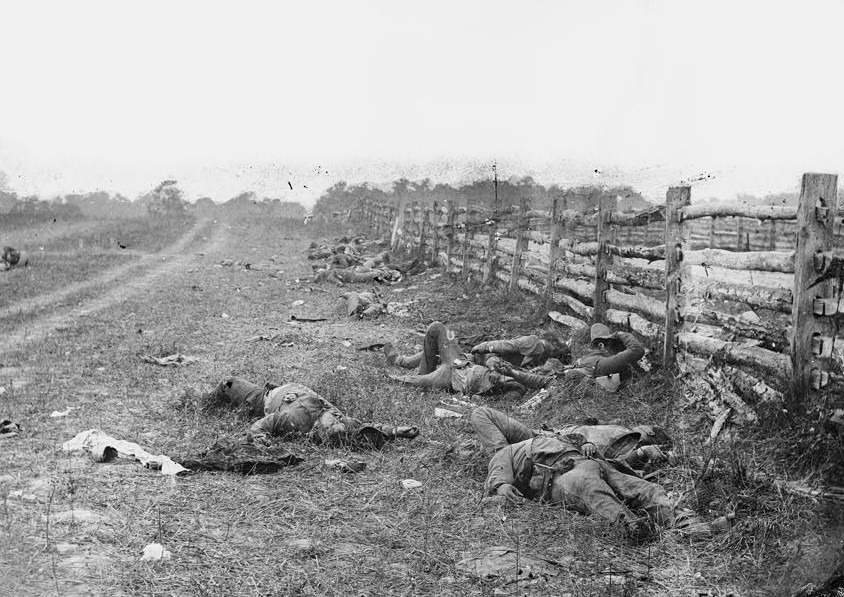One-hundred and fifty-eight years ago on September 17, a battle that has been called the bloodiest single day in American history was fought on Maryland farmland adjacent to a small creek from which the battle took its name: Antietam. More American soldiers died in this battle than all other combat deaths in the nineteenth-century combined. Sharpsburg (as the Confederates called this battle) “brought the Confederacy to the brink of military victory and of diplomatic recognition of its independent nationhood by foreign powers,” as historian James M. McPherson has written. But the “victory” was inconclusive and diplomatic recognition was not to follow. The horror of Antietam was brought home to civilians when Alexander Gardner’s photographs of the dead – taken two days after the battle – were displayed in public.
Confederate General Robert E. Lee demonstrated that he could outmaneuver the Union Army despite their numerical superiority (nearly 2 to 1). And Union General George McClellan earned Lincoln’s growing displeasure. The president commented that his general “had the slows.” McClellan did not renew his attack on September 18 and sat on the north side of the Potomac for nearly six weeks while Lee used the time to reorganize, resupply, and then withdraw back to Virginia.
Despite McClellan’s personal lack of aggressiveness, his troops showed courage and tenacity in the battle. Unfortunately, McClellan’s ineptness seemed to rub off on the two officers who would succeed him at the helm of the Army of the Potomac: first Ambrose Burnside and then Joseph Hooker.
The energy and courage of the Union fighting men were matched by the assigned Medical Corps team on the field. Dr. James Dunn and his surgeons faced overwhelming casualties and a lack of medical supplies until civilian Clara Barton brought supplies to the battlefield. Prior to that, Dr. Dunn and his surgeons had been reduced to binding wounds with corn husks taken from nearby fields.
The Antietam battlefield has been successfully protected thanks to the early work of preservationists. Antietam National Battlefield is a National Park Service protected area that offers visitors exhibits, marked hiking trails, and other educational resources. Yet, even today, new information is found. Recently a newly-discovered map shows where nearly 800 Union and Confederate dead were buried in the days following the battle. In total, the map shows the locations of 5,800 graves located across a 12-square mile area — burial sites not previously known. Because the map is believed to be the only one to exist, The New York Public Library has digitized the document so that the public has access to it.
One indisputable related event that transcends the on-going dispute over who “won” the battle is Lincoln’s announcement of the Emancipation Proclamation five days after Antietam. That document freed many, but not all, enslaved people across the country effective January 1, 1863.
Thanks to the following for information used in this blog:
Crossroads of Freedom: Antietam, by James M. McPherson
Forgotten Civil War Map, by Michael Ruane, Washington Post, June 17, 2020
Photo: Confederate Dead taken by Alexander Gardner, September 19, 1862

Recent Comments